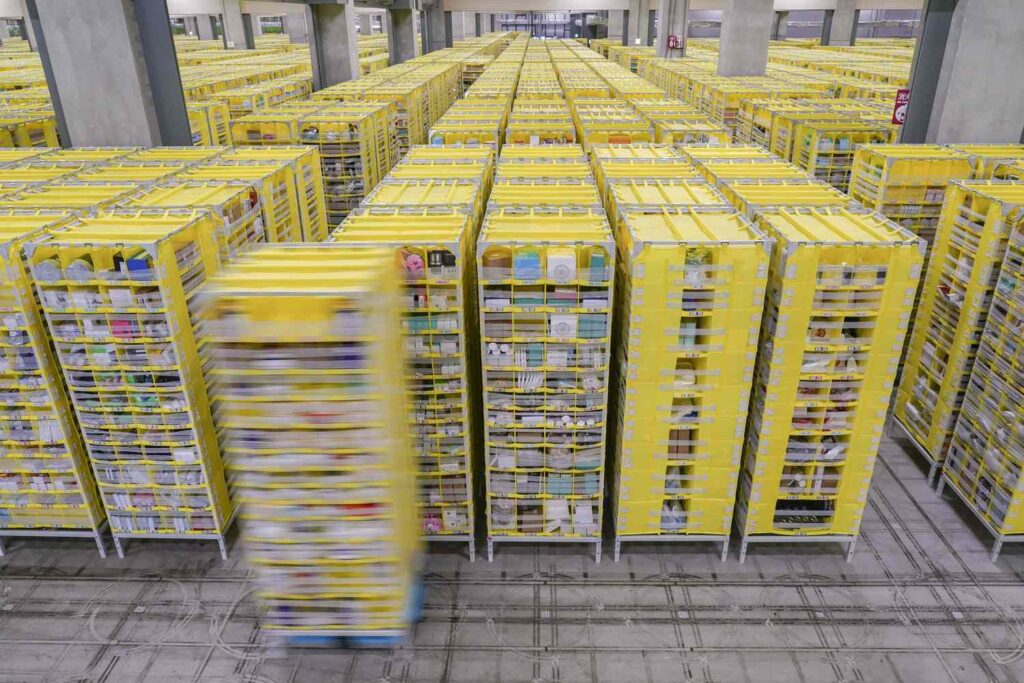:max_bytes(150000):strip_icc():format(jpeg)/GettyImages-2222125713-dc4cd46bb5fd464d87ae0acf36893e56.jpg)
Key Takeaways
- The One Big Beautiful Bill Act, which accelerates the pace at which companies can write off infrastructure and equipment investments, is expected to increase Amazon’s free cash flow by $15 billion a year between 2025 and 2027, according to Morgan Stanley.
- Analyst Brian Nowak forecasts Amazon could save up to $4 billion a year by investing half of its tax savings in warehouse robotics and automation.
- Amazon is also likely to put a substantial portion of its freed-up cash toward data center construction as it races to meet booming demand for AI.
Amazon (AMZN) is slated to report second-quarter results after the closing bell on Thursday, and the recently passed One Big Beautiful Bill Act could factor into the e-commerce giant’s guidance.
The OBBBA, which enables companies to write off infrastructure investments and research and development costs in the year they’re incurred, could lift Amazon’s free cash flow by $15 billion annually between 2025 and 2027, according to Morgan Stanley analyst Brian Nowak. And investing just 50% of those savings in warehouse robotics could save Amazon billions annually within the next few years, wrote Nowak in a note on Sunday.
“We estimate every 10% of global units flowing through next-gen robotics warehouses could translate into $2bn-$4bn of annual recurring savings for AMZN by 2027,” said Nowak.
Nowak estimates it would cost Amazon about $450 million to build a next-generation robotics warehouse, and about $100 million to update an existing facility. At that price, the company could use half of its OBBBA savings to retrofit 74 warehouses, or about 11% of its existing facilities, every year. Those improvements would likely go a long way toward increasing the share of Amazon’s merchandise that moves through optimized warehouses.
Granted, building and updating warehouses is easier said than done. “We acknowledge building time (these warehouses likely take 12 months+ to build/retrofit) and supply/component constraints will still exist,” said Nowak.
Amazon may also have other equally pressing priorities. The company is locked in a race with Big Tech competitors to develop the most advanced AI models and add cloud computing capacity. Nowak estimates Microsoft (MSFT), Alphabet (GOOG), and Meta (META), which have committed to spending hundreds of billions of dollars on data center and other infrastructure projects this year, will reap similar OBBBA benefits and are likely to put some of their tax savings toward AI infrastructure buildouts.
Amazon has aggressively pursued automation as part of its efforts to improve delivery times and drive down costs in its e-commerce business. The company set an average delivery speed record for Prime members in the first quarter, according to executives. Late last month, Amazon dispatched its millionth robot to a fulfillment center in Japan and rolled out DeepFleet, an AI model that coordinates warehouse traffic.


